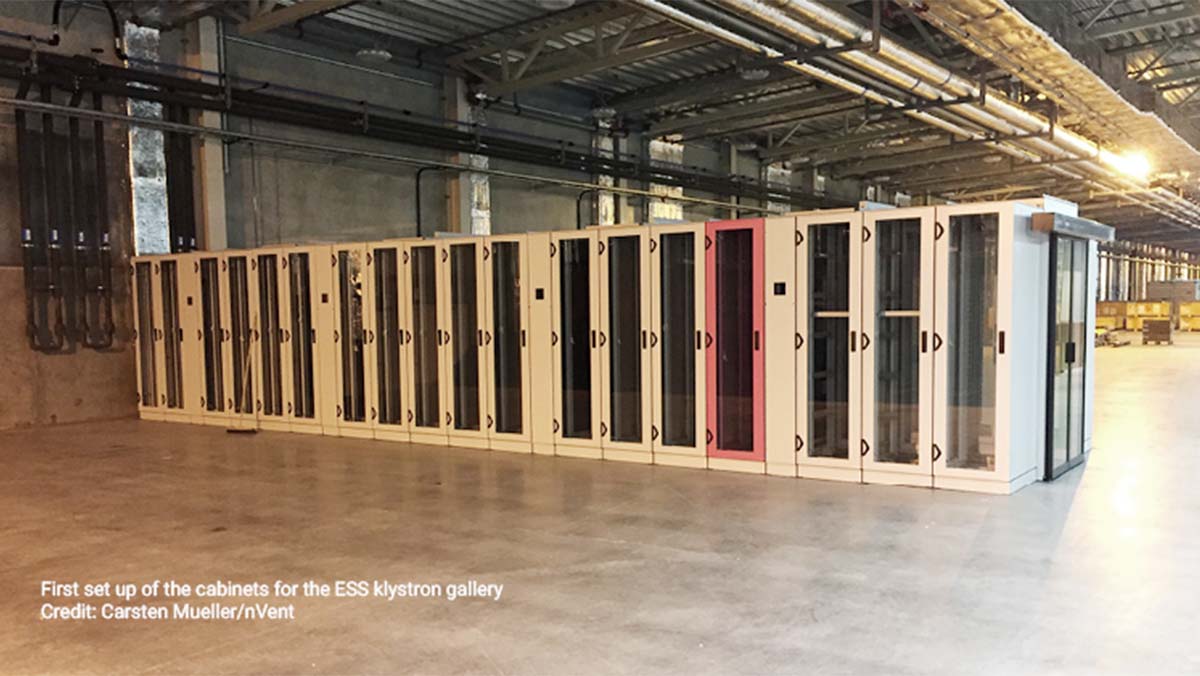nVent protects and cools accelerator equipment at ESS

nVent Europe
nVent Europe offers electronic infrastructure that connects and protects sensitive electronics in demanding applications. Products and services such as cabinets, racks, power management, monitoring, and management are delivered to industry customers and to research facilities.
In 2017, ESS sought a state-of-the-art containment and cooling system solution to connect and protect the complex electrical and electronic equipment that controls the accelerator. The nVent team answered the highly competitive call for tenders.
A once-in-a-lifetime opportunity
Ulf Broome, regional account manager for nVent SCHROFF, explains why the company decided to submit the tender.
For many of us, this ambitious project is a once-in-a-lifetime opportunity. Plus, we were confident from experiences with other crucial physics and larger research centres that our extensive team and resources could deliver ESS’s design, installation and delivery needs. We were thrilled when we learned we were awarded the contract!
Ulf Broome
Regional account manager
Design details evolved during the multiyear construction
The solution from nVent met all specifications and requirements for containment. In the process, the original specifications from the tender changed several times, as the design details of the various accelerator systems evolved during the multiyear construction. The nVent team adapted and delivered modified solutions.
The final solution comprises 20 hot aisle containments, including over 900 19” nVent SCHROFF Varistar racks, around 200 Varistar SHX cooling units, and close to 900 power distribution units (PDUs).
“It is a multifaceted, living project and we were happy to be flexible and agile in our support, especially as tweaks were made to honour the needs of the scientific community,” says Carsten Müller, Lead Project Engineer at nVent.
“We are pleased with the delivery of quality, design and installation to ESS, and with the functionality of the solution. We are extremely happy to take part in this scientific project.”
Last edited 2021